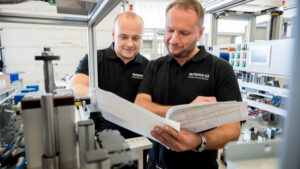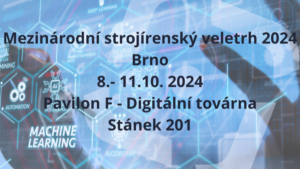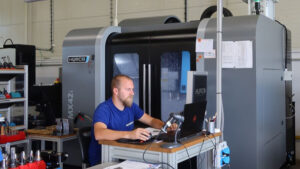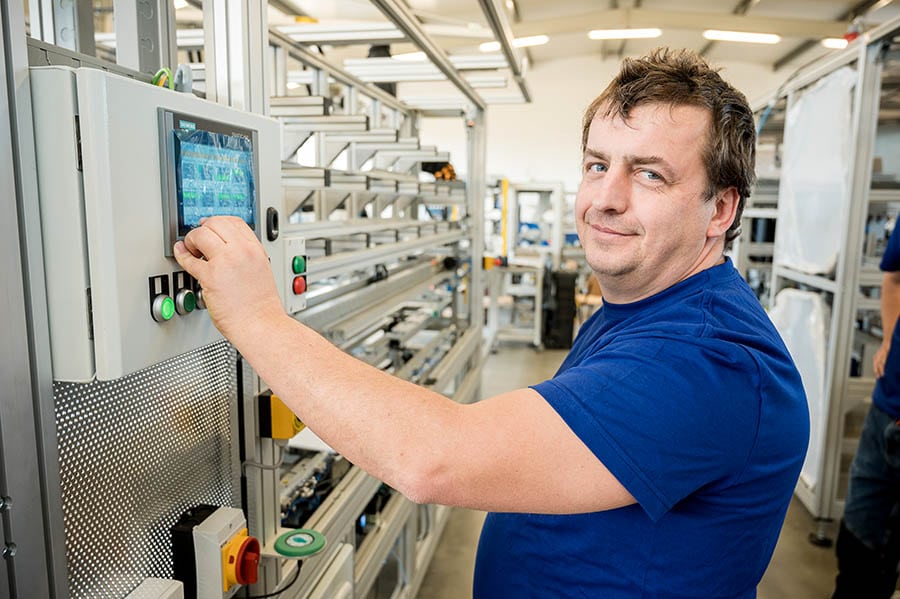A significant component of a smart factory is information about material flows, products, and technology movements. So what are the challenges and technologies that are critical to the ability to create a transparent manufacturing environment?
One of the trends that manufacturing companies have to deal with today is the increasing customization and individualization of products, resulting in an increasingly complex production program. As the number of product variants increases, managing their flow within internal production and logistics processes is becoming more challenging.
One of the primary conditions for managing highly complex production and delivering the product to the customer at the right time, quantity, and quality is the perfect synchronization of all internal processes. In particular, the focus should be on absolute transparency of flows within the company, ideally in real-time. In office activities, it is already relatively easy to track individual process steps within information systems, which is nowadays the standard with few exceptions
However, the ability to track the flow of products, orders, or materials can change rapidly regarding operations. By operations, we mean production, warehouses, internal logistics, or processes related to maintenance, quality, etc.
Why is this happening when most companies have order tracking and management information systems, Enterprise Resource Planning (ERP) solutions, or warehouse management systems?
Several obstacles are limiting the full-fledged setting up of transparent processes in production; here, we will mention only the most important ones
- Production and intralogistics are managed in a "come and see" style, or a combination of handwritten information and digital outputs
- The data resides in various isolated information systems (ERP, MES, QMS, WMS, etc.), which makes it very difficult to use it when complex decisions are needed
- Data and information are not available in real-time
- Data inputs and consequently show error rates, especially when input information is manually entered or overwritten
- Automation (Operational Technology OT) and digitization (IT) in a manufacturing environment are separate worlds, limiting visibility into what is happening on individual machines and enterprise systems that use data to drive processes and subsequent worker decision-making
- No clear metrics are given for the use of data in actual operations - for example, if data on the time of supply of a specific production line is available, it is not actively used to monitor the efficiency of intralogistics processes
Keep production flows under control
The cornerstone of a cost-effective manufacturing company's success is gaining control over the flow of materials, products, and production technologies at every moment of their presence. An example of how to achieve such control is through the use of intralogistics material flow tracking technology. The most available technologies are Radio Frequency Identification (RFID), Ultra-wideband (UWB), Bluetooth Low Energy (BLE), Real-Time Location Systems (RTLS), or Global Positioning System (GPS). Of course, it is also possible to work with data from many sensors, barcode scanners, or technology control systems in logistics and manufacturing.
Interestingly, one of our sister companies: Antra ID has achieved efficiency gains and error reduction through RFID technology at the Hungarian manufacturing plant of a luxury car manufacturer. In a section where many production lines are used to assemble and test engines, robots lift the entire assembly onto a conveyor belt. An automated system reads the RFID tag from the pallet, then matches it with the factory engine number reported to the system by the robot. The motor destination information is paired with the specific motor, and the conveyor then receives instructions to deliver the motor to a defined location in the warehouse. Everything is automated without the need for live operator interaction.
What the near future holds
The future of digital factories is closely linked to the ability to integrate data from a range of manufacturing and business systems. In some companies, this is still only an isolated issue, for example, on one specific line or within a limited process. But other companies are already using digital twins, virtual representations of the physical world, for more complex tasks, including real-time tracking of production flows.
The combination of physical and IT automation, production management autonomy, and intralogistics will play an increasingly crucial role in increasing the competitiveness of companies, especially in regions with a growing share of personnel costs. This includes, for example, the Czech Republic, Poland, and Hungary.
The combination of physical and IT automation, production management autonomy, and intralogistics will play an increasingly crucial role in increasing the competitiveness of companies, especially in regions with a growing share of personnel costs. This includes, for example, the Czech Republic, Poland, and Hungary.





